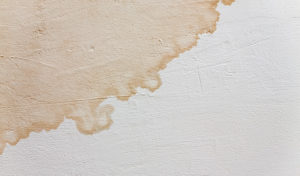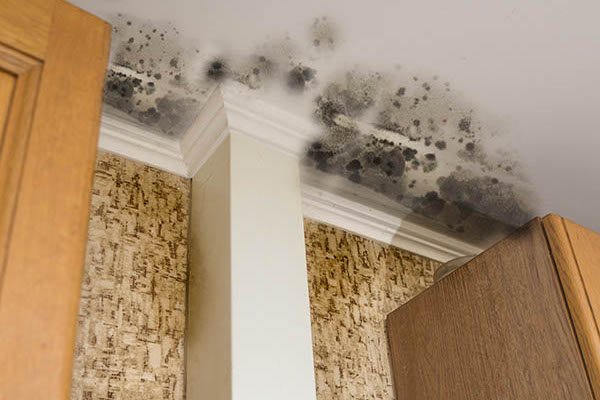Detect and Repair Water Stains Professionally
Detect and Repair Water Stains Professionally
Blog Article
What're your insights and beliefs about How to Find and Repair Water Leaking in the Wall?

Water discolorations on walls are not pleasant to the eyes. Often it seems nearly inevitable to experience water discolorations on wall surfaces in residences.
House owners living in damp areas continuously manage the worry of water discolorations on wall surfaces. But that doesn't need to be the case for you. With exact and all-around details on the reasons for water discolorations and prompt repair service processes, you will certainly constantly be a step ahead of such incidents. So, this article guarantees to be a helpful guide for you.
3 Typical Causes of Water Stains on Walls
In contrast to common belief, water spots on wall surfaces do not constantly originate from inadequate building materials. There are several reasons for water spots on walls. These include:
Poor Drain
When making a building plan, it is critical to ensure adequate drainage. This will prevent water from seeping right into the wall surfaces. Where the drain system is blocked or nonexistent, underground moisture builds up. This links to too much moisture that you see on the wall surfaces of your structure.
The leading reason of wet walls, in this instance, can be a bad drain system. It can also result from inadequate administration of sewer pipes that go through the structure.
Moist
When hot wet air consults with dry cool air, it creates water beads to form on the wall surfaces of structures. This occurs in kitchens and bathrooms when there is steam from food preparation or showers. The water beads can stain the bordering walls in these parts of your home and also spread to various other areas.
Damp or condensation influences the roofing and wall surfaces of buildings. This triggers them to appear darker than various other areas of the house. When the wall is wet, it develops a suitable setting for the growth of germs and fungis. These might have unfavorable results on health, such as allergic reactions and breathing disorders.
Pipe Leaks
A lot of homes have a network of water pipes within the wall surfaces. This ensures that the pipes are faraway from the reach of destructive rodents. It constantly raises the feasibility of such pipelines, as there is little oxygen within the walls. This dissuades corrosion.
A downside to this is that water leakage affects the walls of the building as well as creates prevalent damage. A telltale sign of defective pipes is the appearance of a water discolor on the wall surface.
Water Stains on Wall: Repair Service Tips
When dealing with water spots, house owners would normally desire a fast solution. They would soon realize this is counterproductive as the water stains recur. So, here are a couple of helpful tips that will direct you in the repair work of water stains on walls:
Pro Pointer
A houseplant in your house also enhances its moisture. So, if your home is already moist, you may intend to introduce houseplants with minimal transpiration. An example of ideal houseplants is succulents.
Final thought
Although no one wants to have water discolorations on walls in their house, it can take place to the very best of us. This article offers you leverage, as you currently know exactly how to handle this mishap if it does happen.
It is constantly best to recruit specialist services to assist fix the problems in your house.
Often it seems nearly inevitable to experience water spots on wall surfaces in homes.
In contrast to preferred belief, water stains on walls do not constantly stem from poor structure products. There are several reasons of water discolorations on walls. The water beads can discolor the bordering wall surfaces in these parts of your house and also spread to other areas.
Right here are a couple of practical tips that will assist you in the repair of water spots on wall surfaces:
CHECKING FOR WATER DAMAGE
Water damage can be costly, and it may begin before you even notice the first signs of trouble. Water damage can cause mold and mildew in your walls and floors, which can create an abundance of health concerns for your family. It can also lead to costly repairs of various appliances and general home fixtures. To avoid the pricey consequences of water damage, here are Warner Service’s top 5 places you should check:
The walls – The easiest place to spot the beginnings of water damage is on the walls and ceilings of your home. If water damage is present, there will most likely be water stains, especially around the windows and doorframes, and/or cracks in the drywall. If a stain looks unusual (discolored to brown, black or gray, raised texture), has a swollen appearance or is soft to the touch, contact a professional immediately. The pipes – To avoid water damage, consistently check the pipes in your kitchen (especially the dishwasher and ice maker), bathrooms, laundry room (specifically washing machines) and basement for corrosion, leaks and water stains. Pay special attention to where the pipes connect in your home and the location of caulking around the bathroom fixtures, including toilets, sinks, showers and tubs. Missing or loose caulking and grout could be signs of leaking water. This seepage can also quickly cause mold and rust, so double check your water heater and tank for wet spots on the floor. The floor – Water damage is very easy to spot on the floor. Look for any warping or buckling of the material, especially in the basement. If your home has wood flooring, look for bright white or dark stains. If your home has carpeting, keep it dry and clean. A damp carpet that smells of mold could cause water damage and health problems. To avoid this, consider installing floor pans under your appliances to help prevent damages from small, slow and undetected leaks. The basement and attic – If your basement or attic smells odd check for mold and mildew around the area, especially the valley where the roof meets. While you are inspecting those areas, check for wall cracks, floor stains, rust and dampness in the insulation. If you live in a colder and/or rainier climate, perform routine checks for water damage from melting snow or ice and rain. The exterior – Check the roof for damaged flashing and missing, cracked or curled shingles. There should also be no standing water anywhere outside your home. This could be caused by puddles, leaky rain gutters or hoses, poor drainage, or short gutter spouts. Invest in a sump pump system or water flow monitoring system, and perform routine maintenance on these outdoor appliances to avoid indoor water damage.

Do you really like reading about Water Stains on Walls? Make a remark directly below. We'd be pleased to find out your suggestions about this page. In hopes to see you back again later on. Liked our entry? Please share it. Help another person check it out. Thanks for your time spent reading it.
Plumbing woes? Connect. Report this page